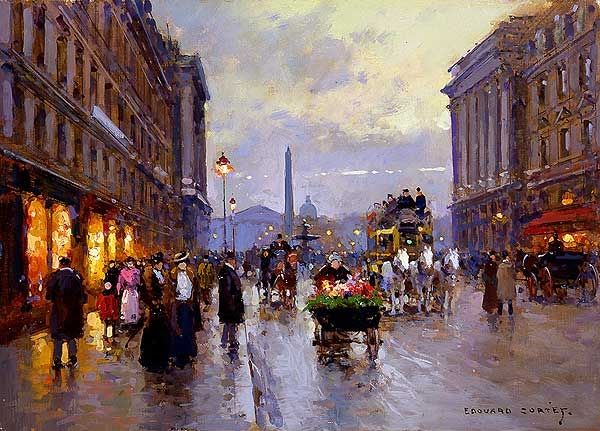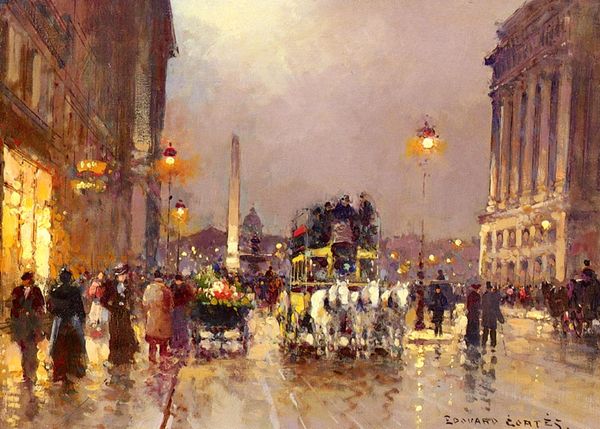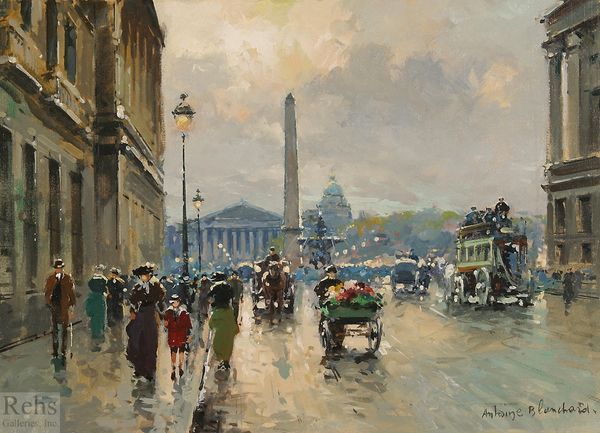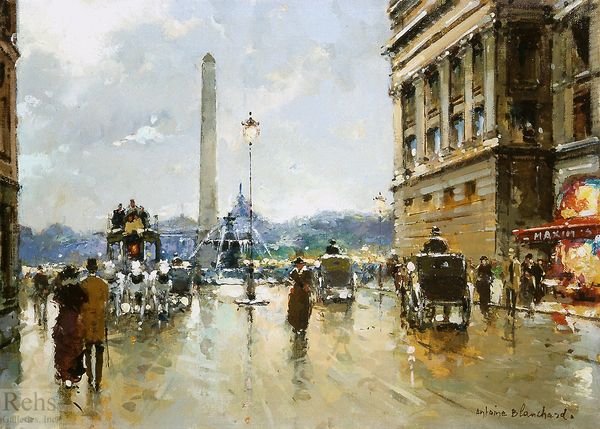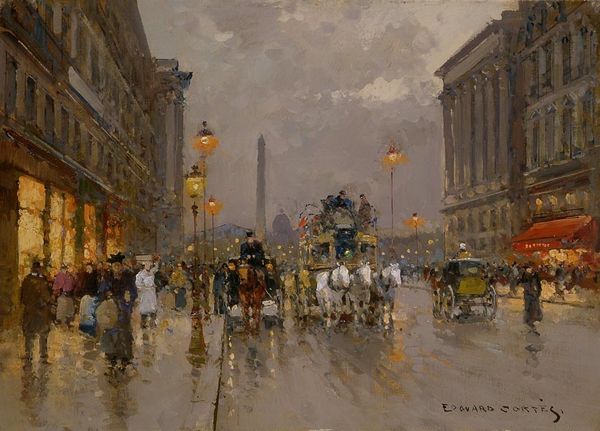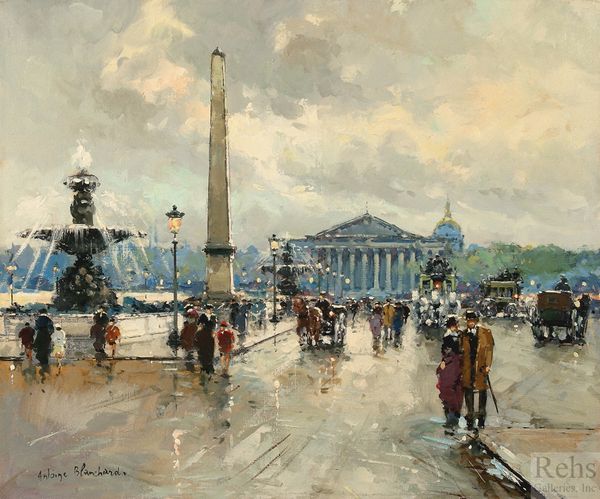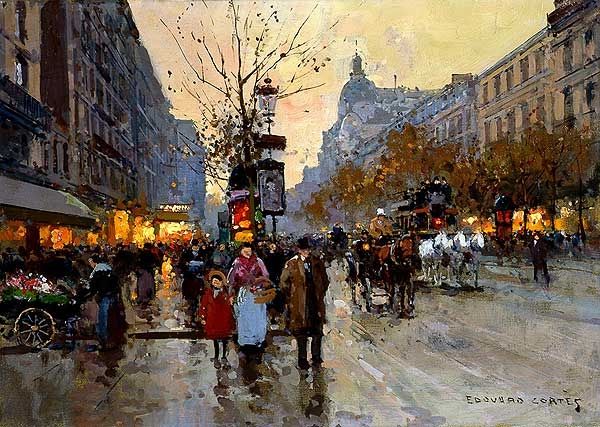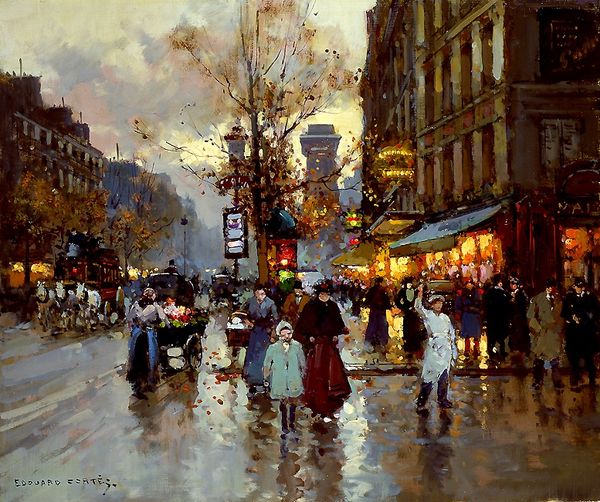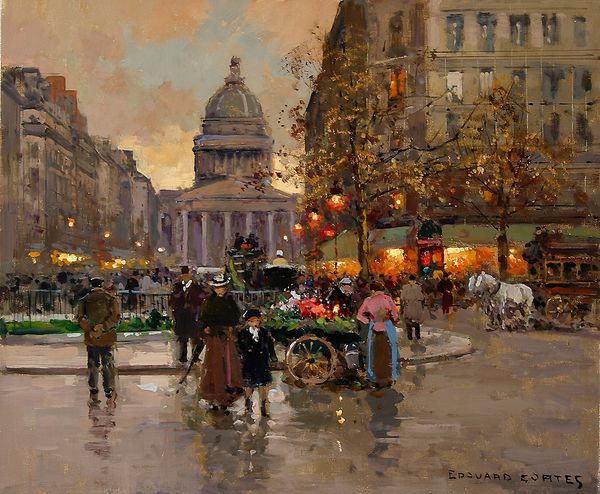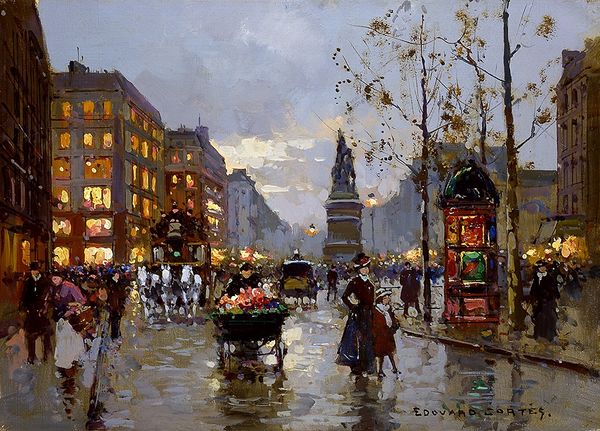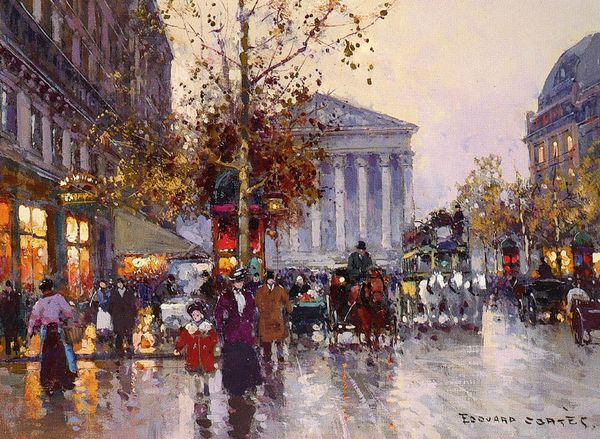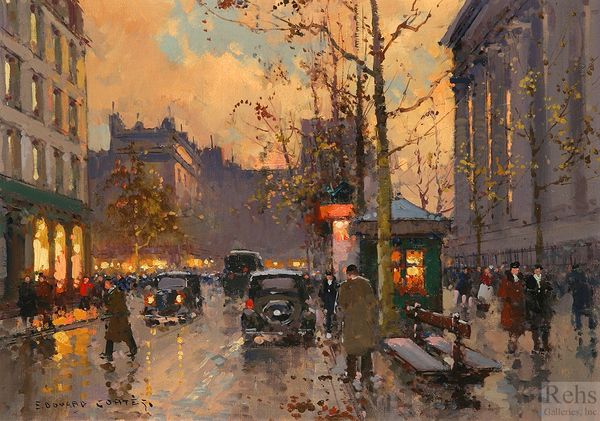
#
tree
#
urban landscape
#
urban
#
cityscape
#
street view
#
house
#
urban cityscape
#
city scape
#
street graffiti
#
urban life
#
urban art
#
square
#
urban environment
#
street
#
building
Copyright: Edouard Cortes,Fair Use
Curator: This captivating cityscape is titled "Rue Royale Concorde" by Édouard Cortès. The scene unfolds with the characteristic vibrancy of Parisian street life, though the date of its creation remains unspecified. What is your initial reaction to this work? Editor: It's funny, isn't it? It feels both bustling and somehow lonely. Like watching a silent movie through a rain-streaked window. There’s all this motion, but under a muted, almost melancholic sky. And the way the light bounces off the wet cobblestones, that really gives it life. Curator: Absolutely. Cortès had an uncanny ability to capture the mood of Paris, often depicting it under varied weather conditions, a crucial commercial tactic at the time for art collectors seeking a piece of the city that changed with the seasons. His consistent subject matter secured him a wealthy patron base seeking souvenirs from the Belle Époque. This particular artwork is no different. Editor: It feels almost staged, despite its energy. All the people and carriages seem arranged to show off the reflections, as if Paris is a stage. The whole scene gives off the impression that something dramatic has occurred, leaving the whole square reflecting this event in their eyes. The lack of any firm date for the work could hint to its nature as something always in flux. A monument reflecting a single, tragic historical note. Am I reading too much into it? Curator: No, that's a very astute observation. You’re noticing that Cortès isn’t merely representing a scene, but he is interpreting it for consumption in a way that fits neatly within existing frameworks of what art collectors would desire, namely familiar and idyllic street views, safely distanced from political and social commentary that might challenge their existing belief system. Editor: Maybe. I like that slightly unsettled feeling it creates. Like catching a glimpse of the past but being unsure of the details, more feelings than fact, wouldn’t you agree? Curator: Undoubtedly. Ultimately, it speaks volumes about how artistic renderings of the city, especially those gaining widespread popularity through institutional exposure like those acquired from Cortès during his lifetime, served—and continue to serve—to curate not just images but collective memory and idealized narratives of national identity. Editor: Makes you wonder what version of our lives future artists will stage for viewers centuries from now. What stories, real or invented, will echo in their rainy cobblestone streets?
Comments
No comments
Be the first to comment and join the conversation on the ultimate creative platform.
